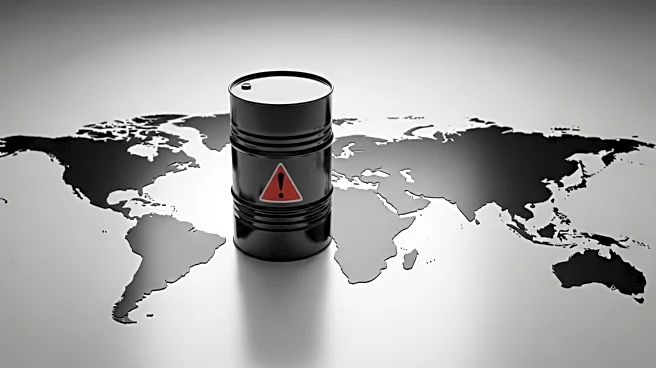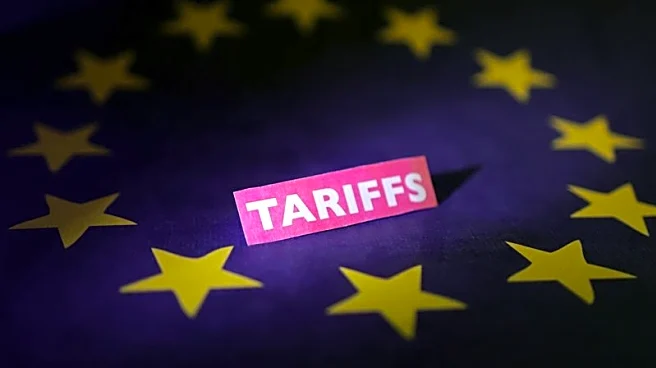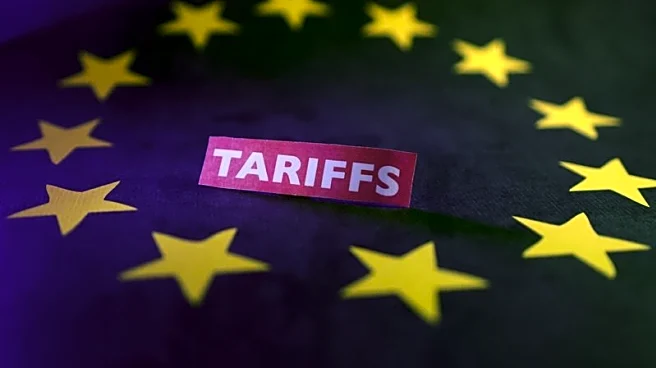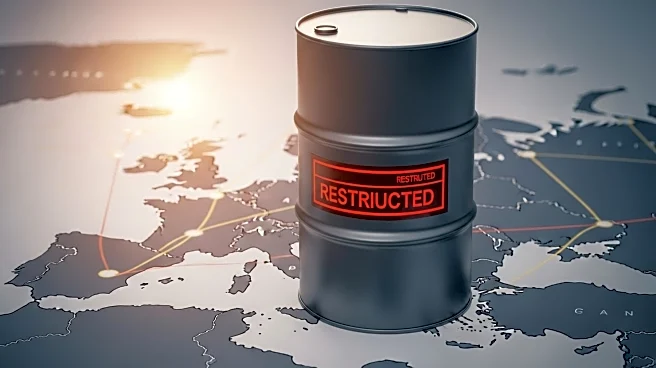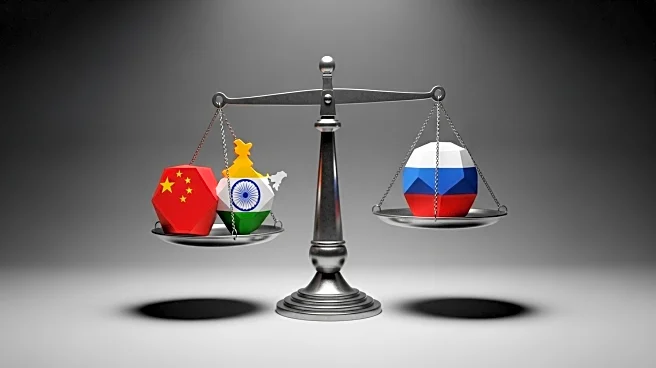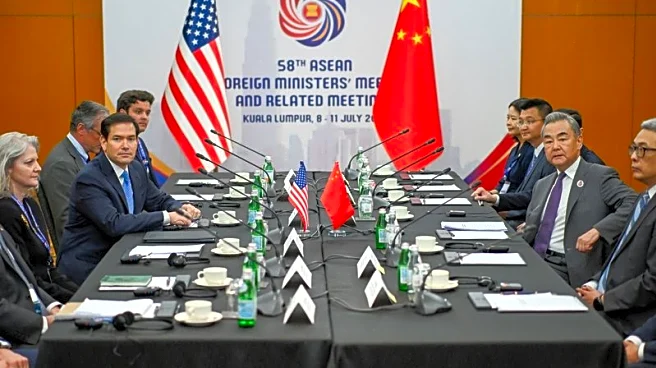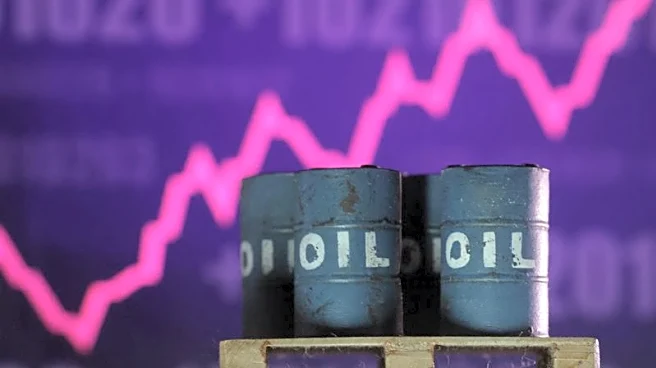What's Happening?
The United States is urging the Group of Seven (G-7) nations to impose significant tariffs on China and India for their purchases of Russian oil, as part of efforts to pressure President Vladimir Putin to end the conflict in Ukraine. President Trump has expressed frustration with the lack of progress in peace talks and is considering new economic sanctions targeting Russian banks and the oil sector. The U.S. proposal includes creating legal pathways to seize Russian assets and using them to support Ukraine. The initiative faces challenges, particularly from EU nations like Hungary, which have resisted stricter sanctions on Russia's energy sector.
Why It's Important?
The proposed sanctions could have far-reaching effects on global energy markets and international trade. By targeting major economies like China and India, the U.S. aims to cut off significant revenue streams for Russia, potentially weakening its war efforts. However, such measures could also disrupt global oil supplies and lead to increased energy prices. The U.S. strategy reflects a broader geopolitical effort to isolate Russia economically while supporting Ukraine. The success of these measures depends on the cooperation of G-7 nations and their willingness to impose similar sanctions.
What's Next?
The G-7 finance ministers are set to discuss further measures to increase pressure on Russia. The U.S. is prepared to impose tariffs on India and China, contingent on European nations taking similar actions. The outcome of these discussions will determine the next steps in the international response to the Ukraine conflict. The EU is also working on a new package of sanctions, which could align with U.S. efforts. The international community will be closely watching these developments, as they could significantly impact the geopolitical landscape and global economic stability.
